Amdo and Kham Group Tour
Amdo and Kham Group tour 2021! After years of arranging group tours, we carefully created the best group tour to meet most travelers' needs. This tour combined both nature and culture of Amdo and kham Tibet with starts in Xining and ends in Chengdu.
23.07 / Day 1: Arrive in XN [2200м] Amdо
Arrive Xining and get settled. If time allows, we will visit Tibetan Medical and Cultural Museum. Xining is located in the eastern part of Qinghai Province and lies on the upper Tsongchu River (Huangshui River). An important attribute of Yellow River. It is formerly part of Tibet’s Amdo province, and a little over one million Tibetans inhabit Qinghai’s minority Tibetan prefectures of Haibei, Hainan, huangnan, Golog, Yushu and Haixi. Now Xining is the political, economic, and cultural center of Qinghai Province with an average altitude of about 2,200 metres (7,200 ft). Human activity in the region can be traced to 2,100 years ago. Xining has six colleges and universities, eight hospitals, some four hundred plants and mines and a few bustling commercial centers where the cuisine reflects the province’s ethnic diversity. Ethnic minorities, mainly consisting of Hui (Muslims) and Tibetans, account for about 15% of the city’s one million people. East part of Xining around the biggest Mosque in Qinghai province, mainly inhabited by Hui Muslims. But there is total of 5 ethnic minorities such as Tu, Sala, Mongolian.
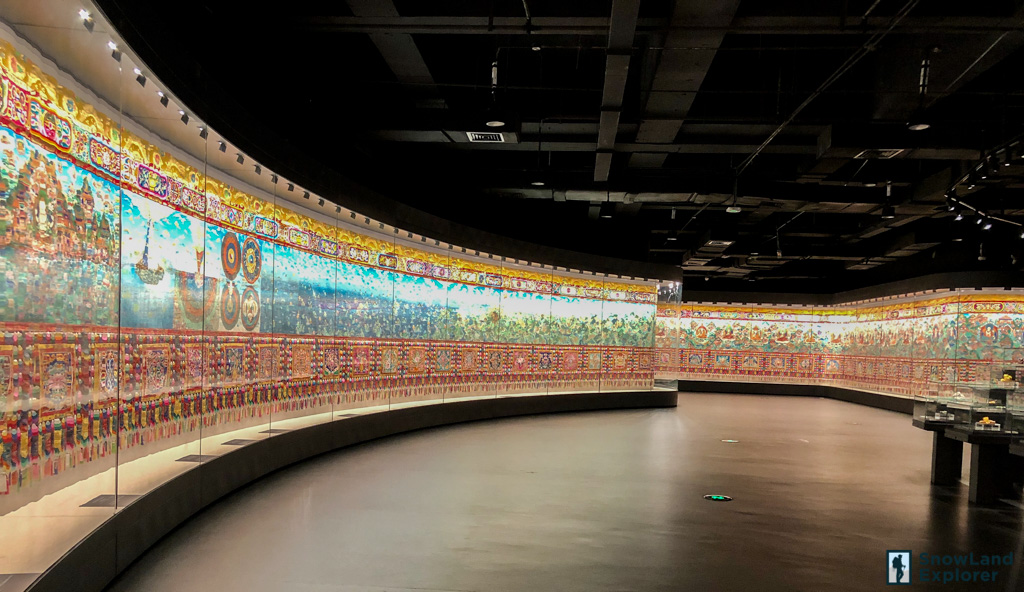
24.07 / Day 2: Xining – Tsigorthang – Drakar Tredzong monastery – Tsigorthang (Xinghai) [3300 м] Amdо
Beginning your journey into the wilderness of Tibetan Plateau. Tsigortang town is situated near the scenic power-place of Drakar Tredzong – ‘white monkey fortress’, which is considered as one of the most important sacred sites in Amdo. There are about 500 monks and 20 Buddhist mentors staying here. Hermits and Tibetan yogis are doing their retreats in the caves located in the mountain cliffs in this area. If time permits, you can do a 2.5 hours hike around the monastery with great view of the monastery and nomads areas nearby. Stay the night in Tsigorthang.

25.07 / Day 3: Tsigorthang – Mt. Amnye Machen – Maduo / Matoi [4300] Amdо
Continually driving west about 220km of rolling grassland, you will make a left turn from highway G214 towards TawuSholma. You will see the snow peaks of Mt. Amnye Machen and other high and rocky mountains. Afterwards, drive to Maduo. which lies at 4350m. Take a short walk up to see prayer flags and Master Padmasambhawa’s Statue on the hillside. Overnight in Maduo.
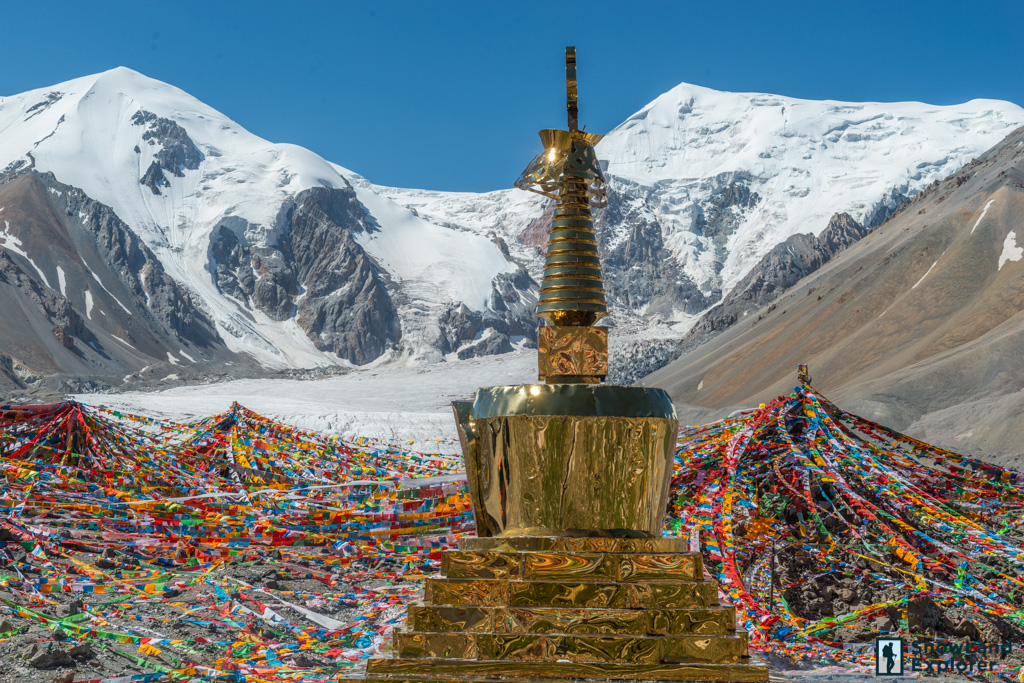
26.07 / Day 4: Mado – Kyekundo (Yushu) [3700 м] Amdо-Кham
Drive through some of the remote areas of Tibetan Plateau. You can see yak hair and white nomadic tents and their yaks and sheep scattering on the leisurely grassland. Continue on to Jyekundo, a large town populated almost entirely by Tibetans. There are many famous sites around Jyekundo, including a picturesque local monastery and an enormous pile of carved stones featuring Tibetan prayers. Overnight in Jekundo or Yushu.
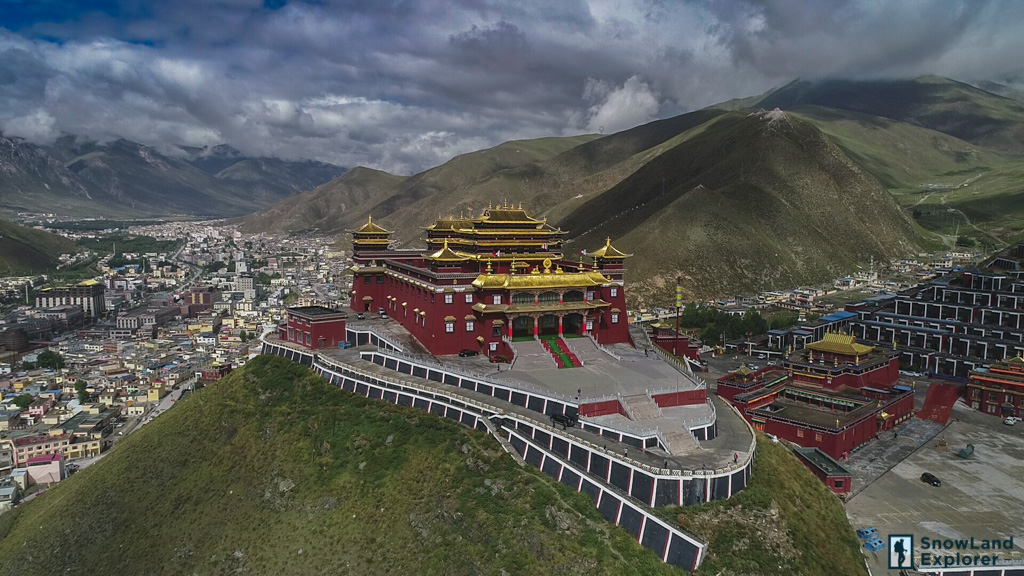
27.07 / Day 5: Yushu – Yushu Horse Festival [3700 м] Кham
Drive to the horse racing ground to watch the horse races. Even though horse race is one of the biggest activity in this event, but there are also many other cultural activities you can see and experience, such as traditional group dancing, yak riding, singing competition, traditional dress show. etc. Afternoon, we drive back to Yushu town.

28.07 / Day 6: Yushu – Sershul monastery (Shiqu) [4200 м] Кham
Spend in the morning in Yushu. After lunch, drive 120km towards east to Sershul Monastery. Serhul Monastery is a Gelukpa monastery lies on the beautiful hillside with bending river a front. This is the biggest monastery in Sershul area which hosts more than 500 monks at the present. There were 1500 monks in it’s peak in 19th century. This place also offers great hiking opportunity on the mountain behind the monastery.
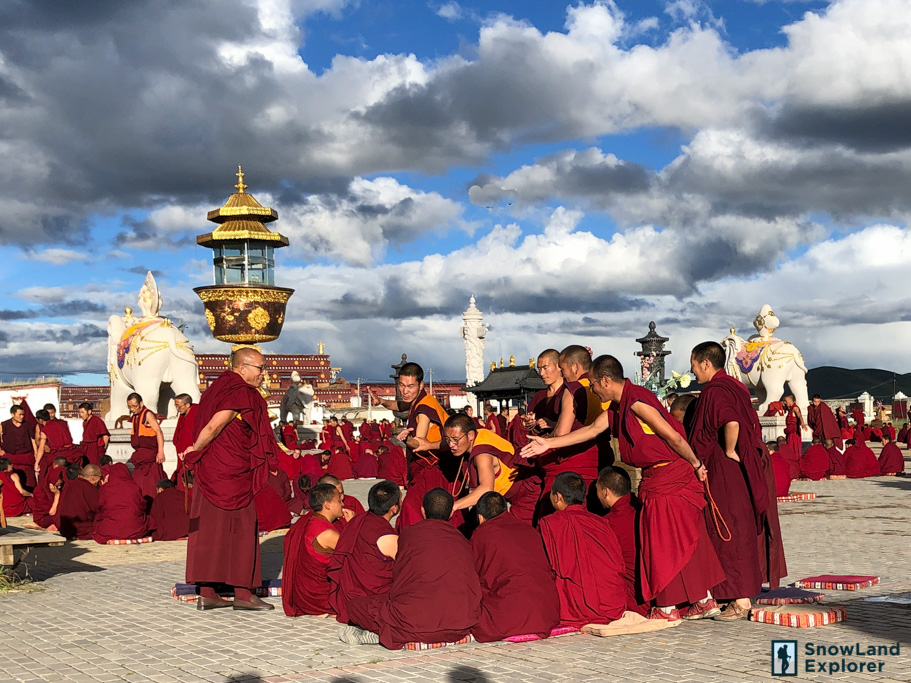
29.07 / Day 7: Sershul monastery – Dzogchen Valley [4100м] – Manigangol [3900м] Кham
Drive from Sershul town which is a small trading town for the local nomads through some beautiful open valleys with covered by yaks, you will reach the famous Dzogchen retreat center. Dzogchen Monastery is recognized as the major pilgrimage site of Tibetan Buddhists in eastern Tibet and as one of the largest Monasteries of Nyingmapa school in Kham region. The monastery is founded by Fist Dzochen Pema Rigzen in the late 16th century on the advice of the Fifth Dalai Lama. Later expended by his students, including Drichen Rabjam, Tenpei Gigme and by his successive incarnations. Dzogchen tradition is one of the most popular practices in the west. The monastery has a picturesque landscape with Golden roof temples in front with forest and snow-capped mountains as a background. Then drive about 50km to the north to Manigangol, Manigange or Manigangol is a small truck stop town where we spend the night.
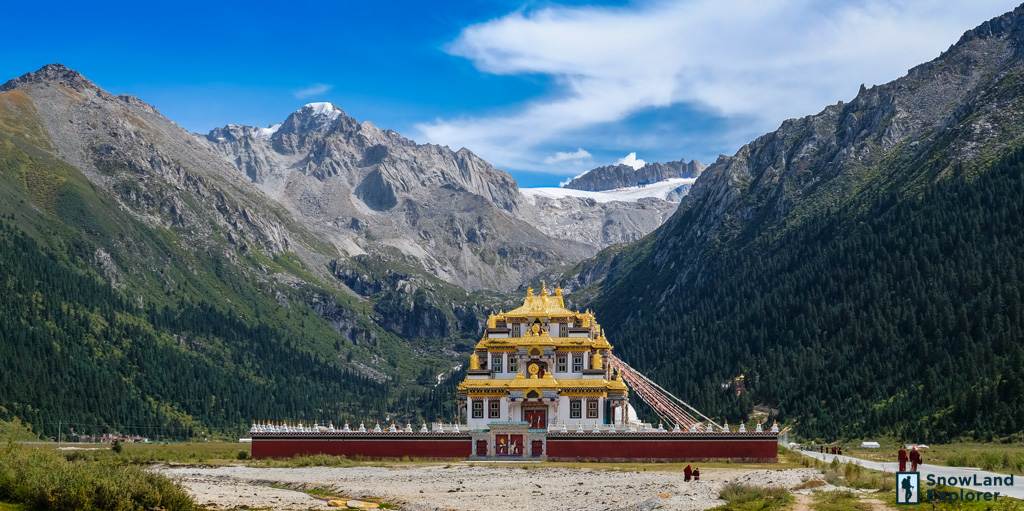
30.07 / Day 8: Manigangol – Yilhun Lhatso lake – view of Mt. Tro La / Chola – (Derge) [3250 м] Кham
Visit the beautiful lake – Yihun Lhatso, a place that locals consider holy. You can see many Mani Stones (Sutra prayers carved on the stone) with different colors on the shore. This crystal clear lake is fed by glaciers and surrounded by snow capped mountains. After spend few hours at the lake, continue on drive towards the famous Chola / Trola Mountain 6168m. There is newly built tunnel operated in 2017, so we won’t be able to climb up to the mountain pass, but you can still see the majestic view of the Chola Mountain. Once you arrive the other side of Chola mountain, we will driving through a deep and green forests valley to Derge. There are Stupas and stone carved Buddha’s statues in the both sides of the river. Derge or Dege is considered as the traditional capital of Kham Tibet. Therefore, it has a rich culture and history to be explored in the region. Today, we will spend the night in Derge.
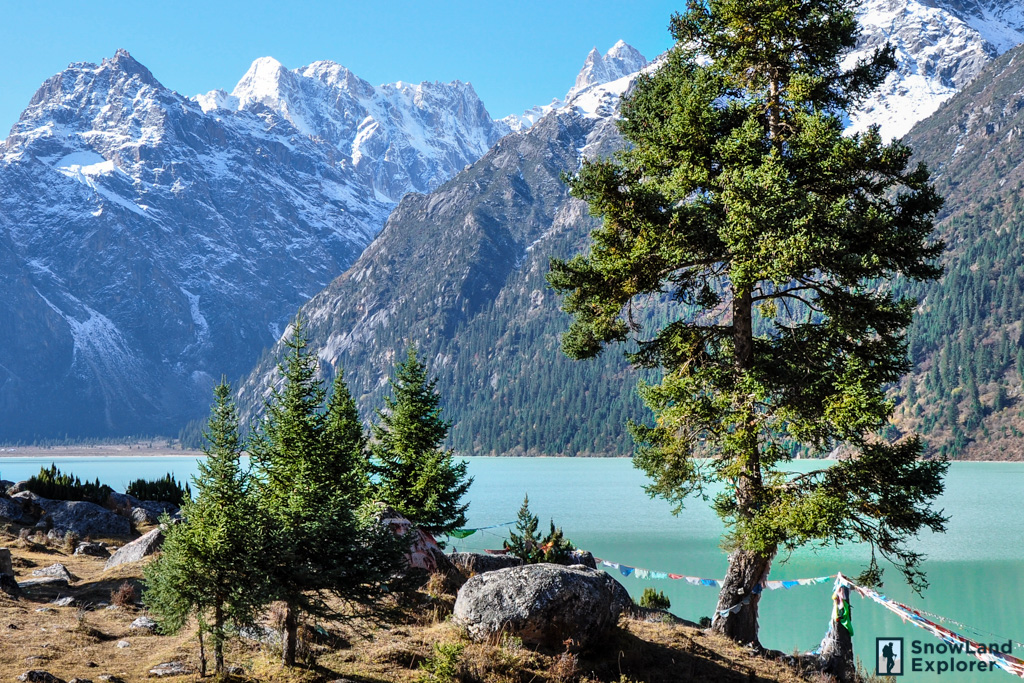
31.07 / Day 9: Dege – Katok monastery – Pelyul monastery (Baiyu) [3100 м] Кham
Visit the DegeParkhang Printing House, one of the most important Buddhist scripture printing houses. Discover manual printing, which is done with carved wood blocks. The king Tenpa Tsering brought Dege to the peak of it’s power by conquering the outlying northern districts of Dzachuka. Under his instructions and assistant from local tribes, Dege Parkhang/ Dege Printing House was founded in 1729. There are total of 217.000 wooden printing blocks housed in the this printing house and the works of this print house has been used all cross Tibet Plateau. Afterwards, visit Dege Gomchen Monastery which was founded in 1448, the monastery originally built as a Sakyapa Monastery, therefore, it has kept strong ties with Sakyapa and the center of Ngor Gompa. You can distinguish the Sakyapa lineage by checking the purple color with white stripes.
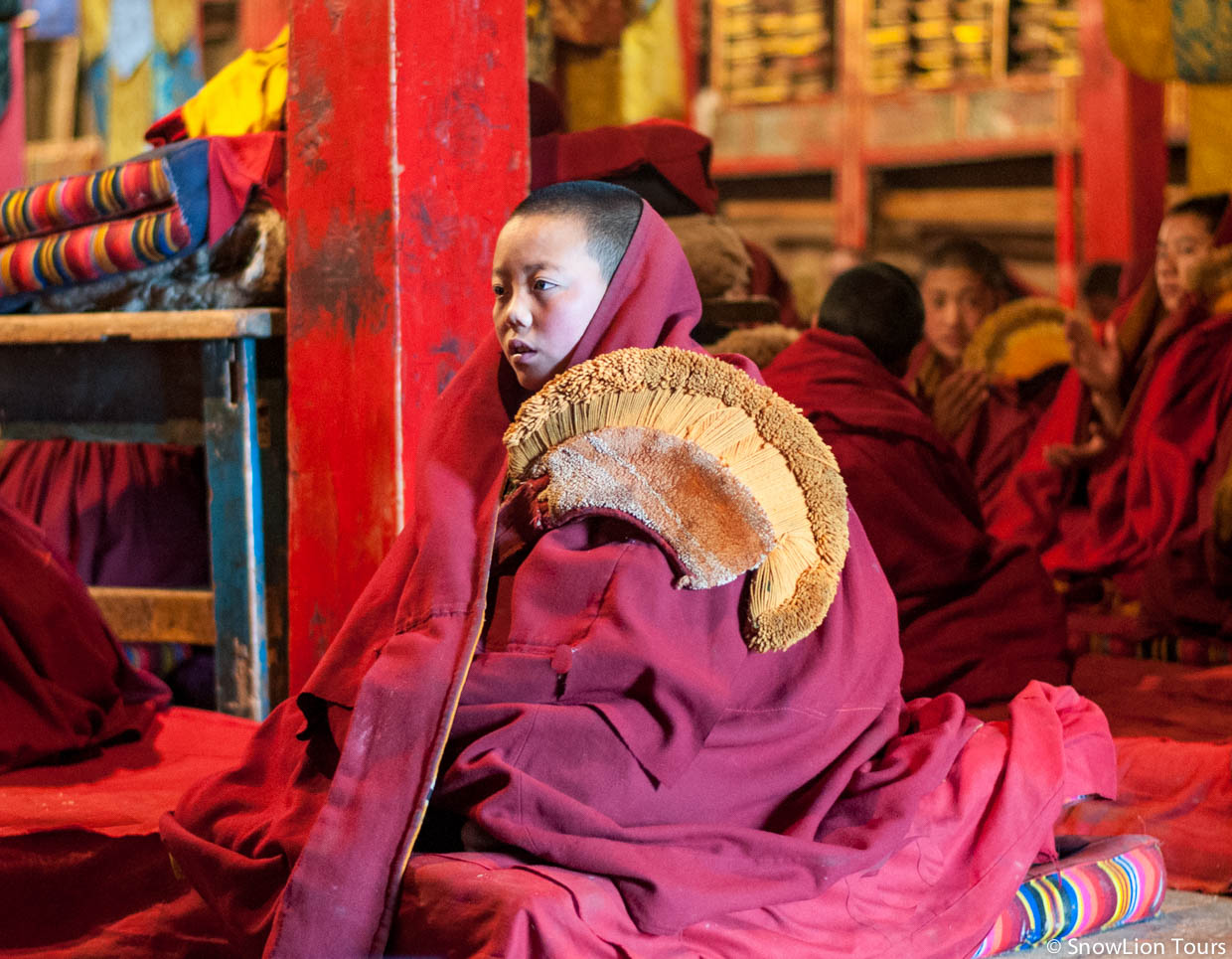
Driving along the Yangtse River you will reach the border of Sichuan and Tibet Autonomous Region. Take shift to left continue drive through some deep valley and forests, Baiyu (Pelyul) town will appear on the left side of the river. The Pelyul Monastery was founded in 1665 in the Kham province of eastern Tibet (present-day Baiyu, Sichuan, China) by Kunzang Sherab, the First Palyul Throne Holder. Before reach to Pelyul, we will make a excursion to Katok Monastery, a great Nyima sect Monastery. We will spend the night in Pelyul.
01.08 / Day 10: Pelyul – Yachen Gar – Garze [3350m] Кham
In the morning visit Pelyul monastery. was built by Lhachen Jampa Phuntsog, the first Dharma King of Dege. It was constructed on a site which possesses all the essential auspicious signs and had been blessed by the presence of many great mahasiddhas. Afterwards drive to Garze via Yachen Gar. Yachen was founded by Akhyuk Rinpoche in the summer of 1980. It is located in an isolated valley 4,000m above sea level, During the 1990s, the population of monks and nuns grew to over 7,000. Recently there more than 10,000 Sangha members now, it is one of the largest gatherings of nuns and monks in the world. Stay overnight in Garze.
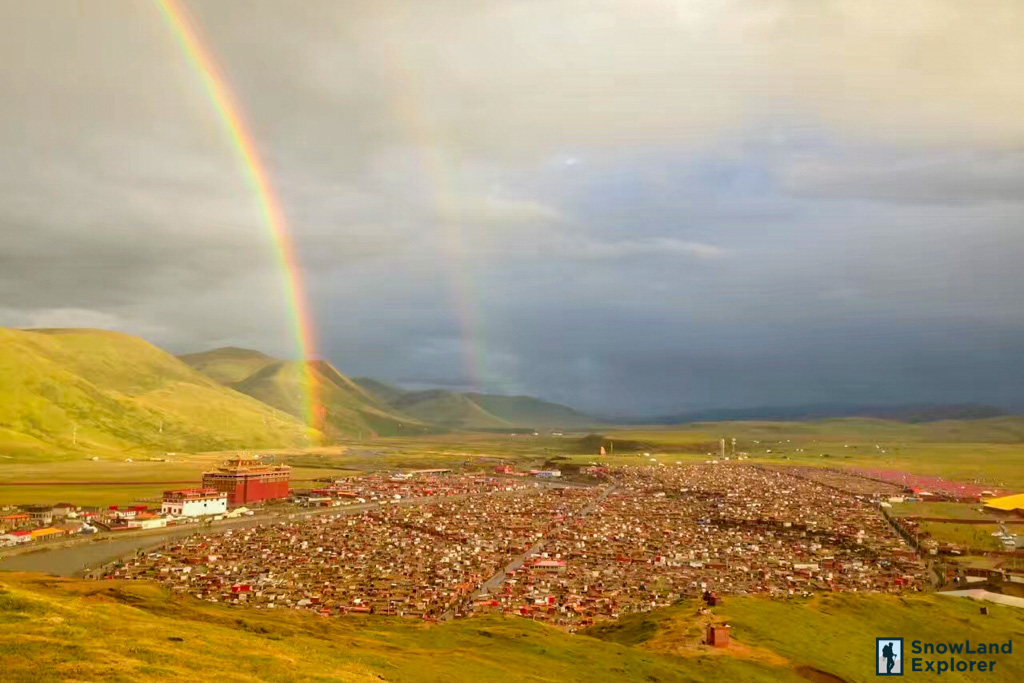
02.08 / Day 11: Ganzi – Tagong / Lhagong [3700m] Кham
Drive about 280km southeast from Ganzi is the Tagong Nomadic region. Travel via some of the highest moutains passes with stunning view on the way. After come to a wild big grassland, you will see a temple surrounded by many stupas (Chortens). We will stop here, you can ride a horse to the hillside where you can see a panoramic view of this monastery with Mt. Yarla as background in distance. You can make a circuit the chortens and temples with local pilgrims. Stay overnight in Lhagong.

03.08 / Day 12: Lhagong – Danba [1860m], 190km, 3 hours Кham
Danba is the home of the Gyarong Tibetans, a Tibetan tribe slightly different from those of other Tibetan regions. Visit some of the rock-made houses scattered on the slopes of mountains. Gyarong Tibetans’ dress is unique; though most men wear casual clothes, the women still wear colorful embroidered headscarves and elaborate belts and aprons. Stay overnight in Danba Optional: drive to Rongdak and overnight there.
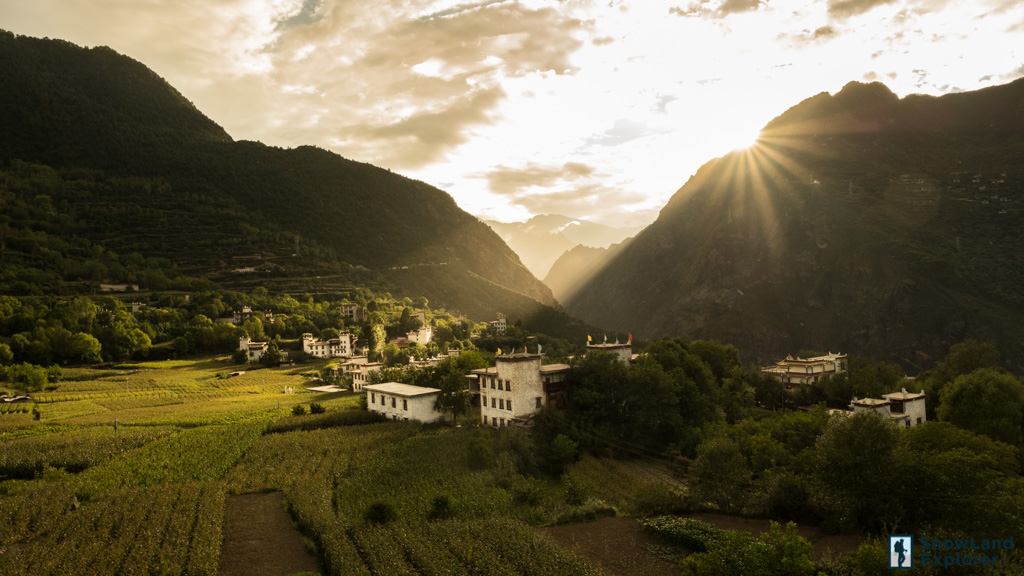
04.08 / Day 13: Danba – Chengdu [500 м] Кhам
Drive to Chengdu via zanlha town and see the great view of Mt Gulha on the way. Our service ends in ChengduA .
-
DepartureXining
-
Departure DateJuly 23rd
-
Return DateAugust 4th
-
IncludedAirport pick up and drop offTibetan English speaking guidePrivate vehicleAccommodationEntrance ticketsLiability insurance
-
Not IncludedYour food (lunch and dinner)Plane/train ticketsTravel insurance (recommended to purchase in your home country)Tips for driver and guide
-
Maps
Similar Tours
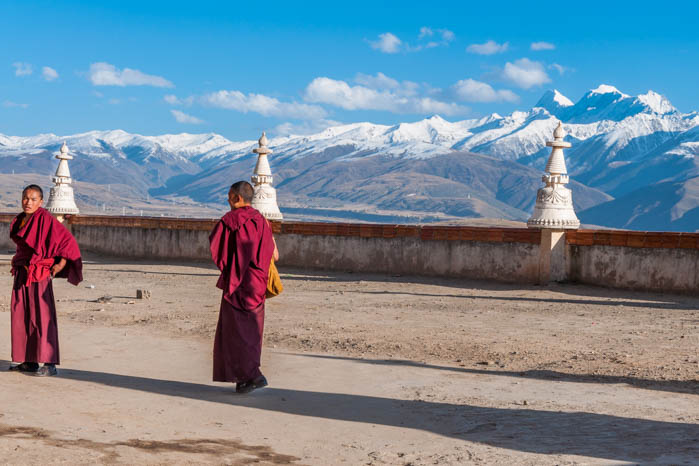
10 days West Sichuan Tour
Kham Tibet, Monasteries, Lakes, Snow Mountains
.jpg)
-2.jpg)


.jpg)
.jpg)
.jpg)
.jpg)
.jpg)
.jpg)